Xylophanes amadis amadis
Xylophanes amadis amadis
zail-AH-fan-eesmm
AM-uh-dis or
zye-LAH-fan-eesmm
AM-uh-dis
(Stoll, 1782) Sphinx
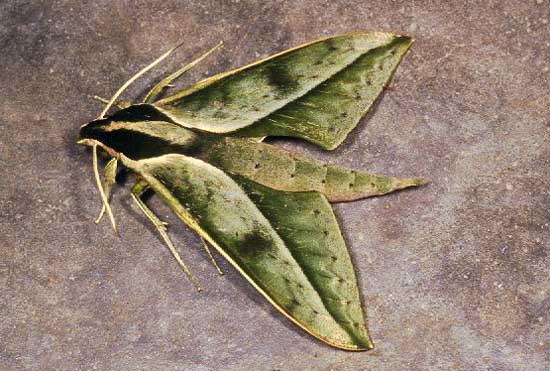
Xylophanes amadis amadis courtesy of Paolo Mazzei,
Rancho Grande, H. Pittier National Park, Venezuela.
This site has been created by
Bill Oehlke at
oehlkew@islandtelecom.com
Comments, suggestions and/or additional information are welcomed by
Bill.
TAXONOMY:
Family: Sphingidae, Latreille, 1802
Subfamily: Macroglossinae, Harris, 1839
Tribe: Macroglossini, Harris, 1839
Genus: Xylophanes Hubner [1819] ...........
Species: amadis amadis Cramer, 1782
|
MIDI MUSIC
.....It's a Wonderful World.....
copyright C. Odenkirk
ON.OFF
<bgsound src="world.mid" LOOP=FOREVER>
|
DISTRIBUTION:
Xylophanes amadis amadis
(wingspan: males: 80-88mm; females: 100mm) fly in
Suriname;
French Guiana: Kaw; Saul; Saint Laurent de Maroni; and westward through
Guyana,
Venezuela;
Peru:
Bolivia: La Paz; Santa Cruz; and
Brazil.
Chaerocampa thalassina Clemens, 1859, Guyana, is the same as
Xylophanes amadis amadis.
The worn specimen below is from French Guiana.
I believe this species flies as far north as Honduras, but it is not reported in Costa Rica by Dan Janzen so it may be limited to
South America. Possibly the Catalogo de las Especies de Sphingidae en Honduras is in error. I do not know for sure, but if that report is correct, it
probably also flies in most of Central America.
Possibly it is in Colombia, but I have no confirmed reports.
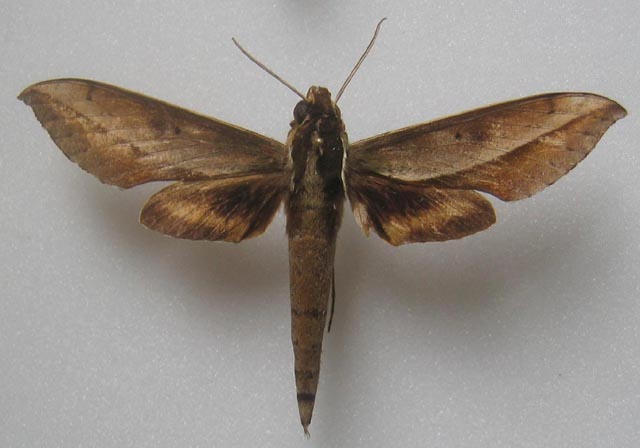
Xylophanes amadis French Guiana, courtesy of
Stephane Vassel,
id by Jean-Marie Cadiou and Jean Haxaire.
The forewing apex is falcate.
The abdomen lacks a dorsal median line, and the subdorsal lines are represented only by small dark green spots on the posterior margins of the tergites.
The forewing is deep green, but fades to brown as specimens age.
There is a black basal patch present on the inner margin.
The two, thin, convex antemedian lines are dark green and are more prominent in their upper halves.
There is a single prominent, dark green, slightly s-shaped, postmedian line running from the body along the inner margin to near midpoint before
curving to the apex. The pm line shades off externally, but is sharply defined
on its inward side by a pale, almost white border. There are two or three internmal vestigial postmedian lines, either very thin and
evenly curved or represented only by vein spots. The thin dentate submarginal line often consists of only a series of vein spots.
The small, black discal spot is followed by a dark green cloud. There are usually some diffuse preapical blotches along the costa.
The hindwing median band is buff, often with a greenish tint. It may be entirely or partially interrupted by black projections running along the veins from the
basal black area to the dark outer margin.
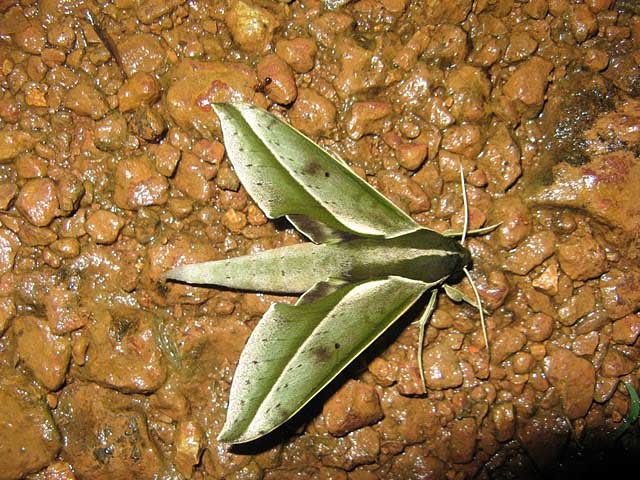
Xylophanes amadis amadis Camp Caiman, near Kaw, French Guiana,
April 24, 2011, courtesy of Andres Urbas.
The pronunciation of scientific names is
troublesome for many. The "suggestion" at the top of the page is
merely a suggestion. It is based on commonly
accepted English pronunciation of Greek names and/or some
fairly well accepted "rules" for latinized scientific names.
The suggested pronunciations, on this page and on other pages,
are primarily put forward to assist those who hear with internal
ears as they read.
There are many collectors from different countries whose
intonations and accents would be different.
Jean Marie Cadiou writes, "When I say "Xylophanes" in English I
pronounce it something like "Zailophanees", with the emphasis on the
"o". The French pronounce it differently, something like
"Kzeelophaness" with no emphasis, and the Germans yet in a
different way..."
In Greek myth, Phanes is the golden winged Primordial Being who
was hatched from the shining Cosmic Egg that was the source of the
universe. He personifies light emerging from chaos.
"Xylo" is the Greek word for wood.
The specimen type for the genus
Xylophanes is Xylophanes anubus. Perhaps ? when Hubner
examined that species, the yellow-orange and brown tones of the
forewings suggested wings of wood.
The species name "amadis" means "love of God".
FLIGHT TIMES:
There are reported flights in French Guiana in February and November.
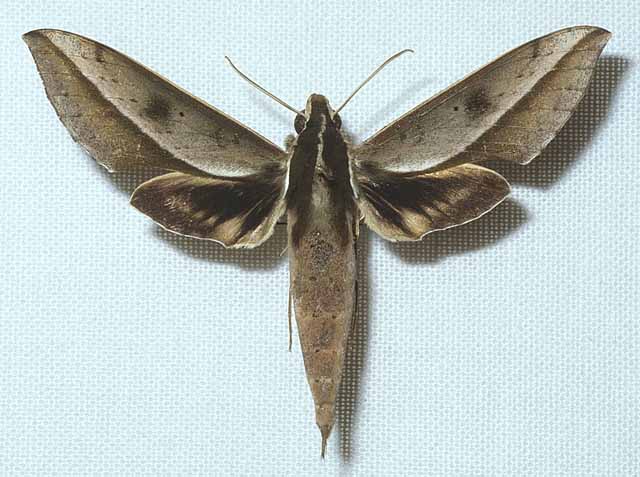
Xylophanes amadis male, courtesy of
Hubert Mayer
copyright.
ECLOSION:
Pupae probably wiggle to surface from
subterranean chambers or leaf litter just prior to eclosion.
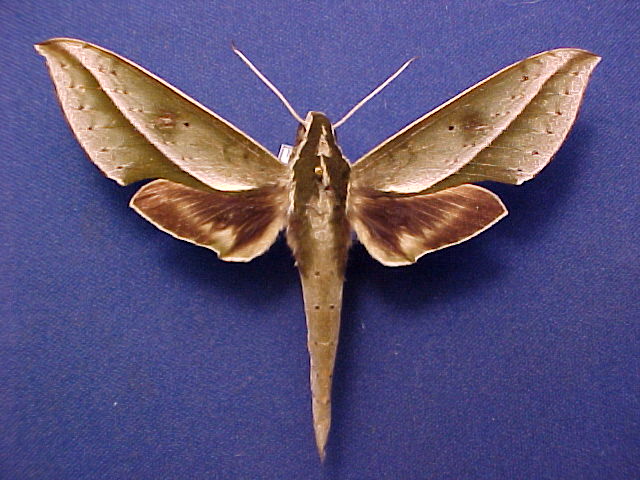
Xylophanes amadis amadis by John Vriesi.
SCENTING AND MATING:Females call in the males with a
pheromone released from a gland at the tip of the abdomen.
EGGS, LARVAE, PUPAE:
Larvae probably excavate subterranean chambers in which to
pupate.
Use your browser "Back" button to return to the previous page.
Goto Main Sphingidae Index
Goto Macroglossini Tribe
Goto Central American Indices
Goto Carribean Islands
Goto South American Indices
Goto U.S.A. tables




